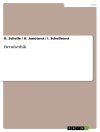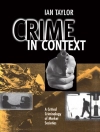The European Yearbook of Constitutional Law (EYCL) is an annual publication devoted to the study of constitutional law. It aims to provide a forum for in-depth analysis and discussion of new developments in the field, both in Europe and beyond. This second volume examines the constitutional positioning of cities across space and time. Unrelenting urbanisation means that most people are, or soon will be, living in cities and that city administrations become, in many respects, their quintessential governing units. Cities are places where State power is operationalised and concretised; where laws and government policies transform from parchment objectives to practical realities. In a similar vein, cities are also places for the realisation of the constitutional rights and liberties enjoyed by individuals.
The book is organised around three sets of relations that await further unpacking in theory as well as practice: that between cities and other institutions in the national constitutional architecture; that between cities and their inhabitants; and that between cities and international organisations. The contributions to this book show the marked diversity in the role and powers available to cities in Europe and beyond, and identify principles and approaches to help stipulate new ways of thinking about the legal role and relevance of cities going forward.
Ernst Hirsch Ballin is distinguished university professor at Tilburg University and vice-dean for research of Tilburg Law School. Gerhard van der Schyff is associate professor at Tilburg Law School, Department of Public Law and Governance. Maarten Stremler is lecturer at Maastricht University, Faculty of Law, Department of Public Law. Maartje De Visser is associate professor at SMU School of Law, Singapore.
表中的内容
Chapter 1. Introduction: The City as a Multifaceted and Dynamic Constitutional Entity.- Part I: Cities within national power structures.- Chapter 2 Cities and the Dutch Constitution.- Chapter 3. Modes of Urban Autonomy: The Constitutional Characteristics of Self-Governance in Amsterdam, Paris, and Hamburg.- Chapter 4. Reanimating Brussels: The Beating Heart of the Belgian Federation.- Chapter 5. How much Local Autonomy is Good for a City? An Analysis of the Peruvian Constitutional Design for Cities and its Effects in the Case of the Lima Metropolitan Area.- Chapter 6 Comparative Constitutional Politics in Hong Kong and Macau under Chinese Sovereignty.- Chapter 7. A Tale of Three Cities: The City in German Constitutional Law.- Part II: Cities and citizens.- Chapter 8. The Constitution and the City.- Chapter 9. Urban Governance and the Right to a Healthy City.- Chapter 10. Topical Storm Approaching: Regulating Public Assemblies and Responding to Online Falsehoods in the City-state of Singapore.- Chapter 11. The City of London: Dominance, Democracy, and the Rule of Law?.- Part III: Cities and the international arena.- Chapter 12 Accelerating Cities, Constitutional Brakes.- Chapter 13. European Cities between Self-Government and Subordination: Their Role as Policy-Takers and Policy-Makers.- Part IV: Constitutional law in the age of the city.- Chapter 14. Urbanization, Megacities, Constitutional Silence.- Chapter 15. Redrawing the Boundaries of City Governance: Preliminary Lines of Inquiry into Metropolitan Cities, Socio-Economic Challenges and Constitutional Law.












